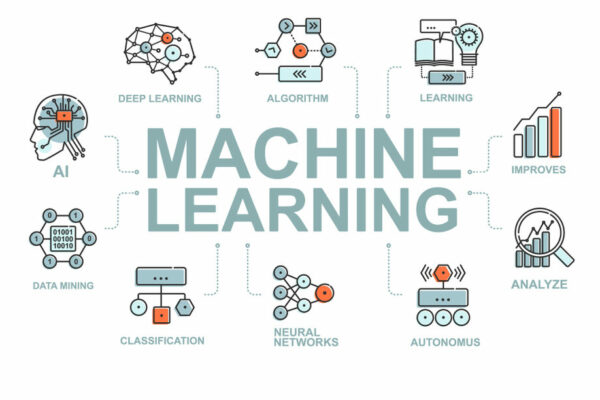Introduction
Machine Learning (ML) has emerged as a revolutionary technology that empowers computers to learn from data and make intelligent decisions without explicit programming. This transformative field of Artificial Intelligence (AI) has wide-ranging applications across various industries, from healthcare and finance to marketing and autonomous vehicles. In this comprehensive article, we will explore the history, core concepts, types, algorithms, benefits, and challenges of machine learning, shedding light on its immense potential and impact on the future.
- The Evolution of Machine Learning
1.1 The Birth of Artificial Intelligence 1.2 The Emergence of Machine Learning 1.3 Pioneering Researchers and Contributions
- Understanding Machine Learning
2.1 What is Machine Learning? 2.2 Supervised, Unsupervised, and Reinforcement Learning 2.3 Training, Inference, and Generalization 2.4 Feature Engineering and Data Preprocessing 2.5 Model Evaluation and Metrics
- Key Concepts and Algorithms in Machine Learning
3.1 Linear Regression 3.2 Logistic Regression 3.3 Decision Trees and Random Forests 3.4 Support Vector Machines (SVM) 3.5 k-Nearest Neighbors (k-NN) 3.6 Neural Networks and Deep Learning 3.7 Clustering Algorithms 3.8 Dimensionality Reduction Techniques
- Real-World Applications of Machine Learning
4.1 Natural Language Processing (NLP) 4.2 Computer Vision and Image Recognition 4.3 Speech Recognition and Synthesis 4.4 Recommender Systems 4.5 Fraud Detection and Cybersecurity 4.6 Healthcare and Medical Diagnostics 4.7 Financial Analysis and Predictive Modeling 4.8 Autonomous Vehicles and Robotics
- Benefits of Machine Learning
5.1 Enhanced Decision Making and Automation 5.2 Improved Efficiency and Resource Utilization 5.3 Personalization and Customer Experience 5.4 Data-Driven Insights and Predictive Analytics 5.5 Advancements in Scientific Research 5.6 Empowering Business Intelligence
- Challenges and Limitations of Machine Learning
6.1 Data Quality and Bias 6.2 Overfitting and Underfitting 6.3 Interpretability and Explainability 6.4 Computation and Memory Constraints 6.5 Ethical and Social Implications 6.6 Privacy and Security Concerns 6.7 Integration and Adoption Challenges
- Machine Learning Frameworks and Tools
7.1 TensorFlow 7.2 PyTorch 7.3 Scikit-learn 7.4 Keras 7.5 Microsoft Azure Machine Learning 7.6 Google Cloud AI Platform 7.7 IBM Watson Studio
- The Future of Machine Learning
8.1 Reinforcement Learning and Artificial General Intelligence (AGI) 8.2 Federated Learning and Edge Computing 8.3 Explainable AI and Responsible Machine Learning 8.4 Quantum Machine Learning 8.5 AutoML and Automated Model Development 8.6 Human-Machine Collaboration
- Machine Learning Ethics and Responsible AI
9.1 Bias and Fairness 9.2 Privacy and Data Protection 9.3 Accountability and Transparency 9.4 Societal Impact and Human Rights 9.5 Guidelines and Regulations
- Machine Learning and Human Skills
10.1 Upskilling and Reskilling the Workforce 10.2 Human Creativity and Judgment 10.3 Collaboration with Machines 10.4 The Role of Ethics and Values
Conclusion
Machine Learning has ushered in a new era of AI, empowering computers to mimic human intelligence and solve complex problems with unprecedented accuracy. As machine learning applications continue to permeate every aspect of our lives, it is crucial to balance the benefits of this transformative technology with its challenges and ethical considerations. By embracing responsible and transparent machine learning practices, we can harness the full potential of this powerful tool and pave the way for a future where humans and machines collaborate to create a more intelligent, innovative, and sustainable world.











Leave a Reply
You must be logged in to post a comment.